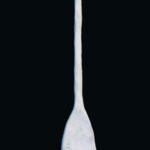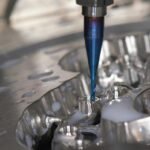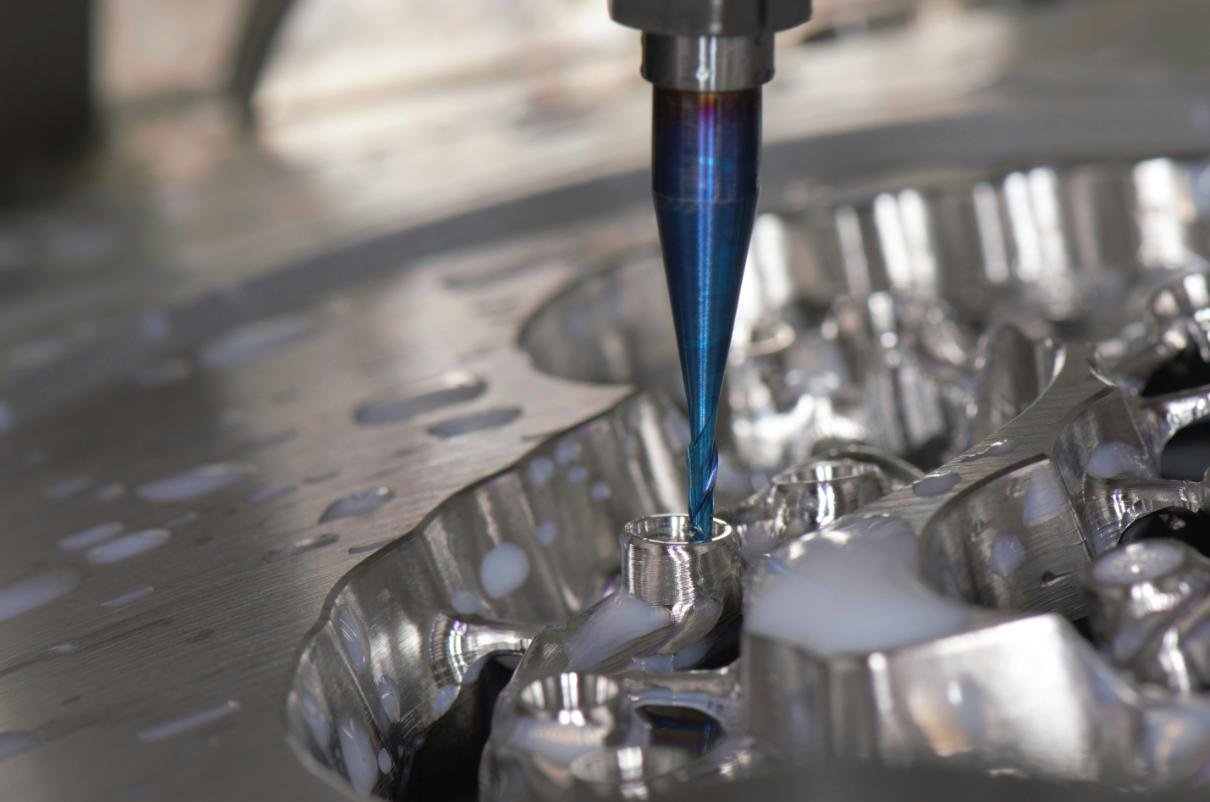Introduction to NC and CNC
Numerical Control (NC) and Computer Numerical Control (CNC) are pivotal technologies in the realm of automated machining and fabrication. NC refers to a precision control method that utilizes coded instructions to dictate the operation of machine tools. This technology emerged during the 1940s as a response to the need for enhanced accuracy and efficiency in manufacturing processes. Early NC systems relied on punched cards or magnetic tape to convey instructions to machinery, significantly reducing the need for manual operation and allowing for improved repeatability in production.
As technology progressed, the advent of computers revolutionized the manufacturing landscape, leading to the development of CNC. CNC integrates computer technology with traditional NC systems, enabling operators to program machine functions via more sophisticated, user-friendly software interfaces. This shift marked a substantial evolution from purely mechanical systems to highly flexible and programmable machinery. CNC machines can interpret complex designs, allowing for intricate fabrication of components across numerous industries, including aerospace, automotive, and electronics.
The fundamental principles governing both NC and CNC technologies involve the use of precise mathematical algorithms to control the movement of tools and workpieces. This precision is crucial in ensuring that products meet stringent specifications. The control systems receive programmed commands, which dictate the exact operations that machines carry out, such as cutting, milling, or drilling. As a result, both NC and CNC machines have become indispensable in modern manufacturing processes, streamlining production while minimizing errors and maximizing efficiency.
Understanding the distinctions between NC and CNC is essential for those involved in the manufacturing sector as it informs decisions regarding investment in new technology, training, and production capabilities. With the continuous advancement of CNC technology, manufacturers are increasingly adopting these systems to remain competitive in a rapidly evolving market.
Historical Background
The origins of numerical control (NC) can be traced back to the mid-20th century, a period marked by significant industrial advances. Before the advent of NC technology, machining tools were operated manually, which posed limiting factors in terms of precision and efficiency. The growing demand for higher precision in manufacturing processes led to the exploration of mechanizing control through programming. The idea emerged from the work of pioneers who recognized the potential for automation.
One of the key developments occurred during World War II, when the United States Air Force sought to improve the precision of aircraft manufacturing. Researchers at MIT, notably John T. Parsons and his team, laid the foundational concepts of NC. They developed an early prototype that allowed machines to execute predetermined sequences of operations based on coded instructions. This marked the transition from manual control to the first instances of numerically controlled machines, which would significantly enhance productivity and accuracy.
The evolution of NC into Computer Numerical Control (CNC) began in the 1960s, driven by advancements in computer technology. The introduction of minicomputers allowed for more complex processing capabilities, making it possible for machines to follow intricate programs. As a result, CNC machines emerged, offering greater flexibility and efficiency compared to their NC predecessors. These machines utilized computer software to read and interpret commands, which not only improved production rates but also expanded the range of tasks that machines could perform.
The advancement of CNC technology continued to progress into the 1980s and beyond with the integration of graphical user interfaces and sophisticated programming languages. These innovations have provided operators with enhanced tools for machine control, leading to a significant shift in manufacturing methodologies. Today, CNC machines are integral to a multitude of industries, showcasing the remarkable journey from basic NC systems to advanced computer-controlled equipment.
Basic Principles of NC
Numerically Controlled (NC) machines represent an important technology in the realm of manufacturing and automation. The core principle of NC technology revolves around the automated control of machine tools via coded instructions. Unlike modern systems, which typically deploy computer-based operation, traditional NC machines utilize punched cards or tapes for programming and control. This method effectively transmits comprehensive sets of commands that dictate the machine’s operations, such as the movement of cutting tools or the direction of machining.
When programmed, the punched cards serve as guides for the machine’s actions, informing it of predefined patterns or sequences necessary to achieve a desired output. This older method of programming presents significant limitations in both flexibility and precision. For instance, once a punched tape is created, any alterations require the production of a new tape, making real-time adjustments nearly impossible. Additionally, the storage capacity of punched cards is severely limited, constraining the complexity of the tasks the machine can perform.
The operational characteristics of NC machines can be both advantageous and restrictive. On one hand, NC technology allows for consistent replication of complex designs, which is beneficial in mass production environments. On the other hand, the lack of adaptability in the programming process can hinder productivity, especially when changes in design or operational needs arise. The inherent limitations in NC systems lead to the development of Computer Numerical Control (CNC) machines, which utilize computer systems for vastly improved programming capabilities, enabling greater precision and operational flexibility.
Basic Principles of CNC
CNC, or Computer Numerical Control, refers to the technology that automates machine tools by utilizing computer programming. The core principle of CNC relies on controlling machinery through a set of coded commands, allowing for precise and repeatable operations. At its essence, a CNC machine translates a computer program into action by maneuvering tools—such as drills, lathes, or cutters—along predefined paths. This shift from manual operation to computer-led execution enhances accuracy and efficiency in manufacturing processes.
One of the key features of CNC machines is their programmability. Operators can input complex instructions via G-code, which directs the machine to perform specific tasks. This capability makes it easier to produce intricate parts with high precision that would be challenging to achieve using manual tools. The programmability offers flexibility, allowing manufacturers to switch between different tasks without the need to reconfigure the machine extensively. As a result, CNC machines enable a smoother transition from design to production, accommodating varying project requirements.
Another advantage of CNC technology is its ability to perform complex tasks seamlessly. Modern CNC machines utilize sophisticated software that enhances their operational capabilities, enabling them to carry out intricate cutting patterns and multi-axis movements. This means that, in a single setup, these machines can create detailed components with intricate geometries. Moreover, CNC systems often incorporate advanced features such as automatic tool changers and real-time monitoring, further enhancing their utility in high-demand production environments.
Overall, the basic principles of CNC highlight its role in revolutionizing manufacturing processes through programmability, flexibility, and the ability to execute complex tasks efficiently. This evolution in machinery not only improves productivity but also elevates the standard of precision in the manufacturing industry.
Key Differences Between NC and CNC
Numerical Control (NC) and Computer Numerical Control (CNC) are both processes utilized in manufacturing automation, yet they exhibit several critical differences that impact their functionality and applications. One of the primary distinctions lies in their programming methods. NC machines utilize punched tape or direct keyboard input to carry out machining instructions. In contrast, CNC machines operate via sophisticated computer software that allows for more complex programming and easy modifications to the machining process. This software can handle intricate designs with minimal human intervention, enhancing the overall efficiency of production.
Another significant difference is found in the control mechanisms employed by each system. NC machines are typically limited to performing predefined tasks, as they rely heavily on manually set parameters and cannot adapt to changes during operation. On the other hand, CNC machines employ advanced control systems that integrate various sensors and feedback loops. This allows for real-time adjustments and adaptive responses to ensure consistency and maintain tolerances. Consequently, CNC systems are capable of executing more intricate tasks with higher precision compared to their NC counterparts.
Precision is a vital aspect of manufacturing that differentiates NC from CNC systems. While NC machines can achieve reasonable accuracy, CNC machines excel in producing high-quality, precise components. CNC technology minimizes human error by automating several aspects of the machining process, ensuring that each part meets stringent specifications.
Finally, the level of automation is a defining feature of both systems. NC machines require a significant amount of manual input and supervision, resulting in higher labor demands. Conversely, CNC machines promote greater automation, allowing for unattended operation over extended periods. This increase in automation not only reduces production costs but also allows manufacturers to allocate human resources to more skilled tasks, making CNC the preferred choice in modern manufacturing scenarios.
Applications of NC and CNC Technologies
Numerical Control (NC) and Computer Numerical Control (CNC) technologies have found their applications across a multitude of industries, contributing immensely to both efficiency and precision. These systems are particularly prevalent in sectors such as aerospace, automotive, and general manufacturing, where the demands for accuracy and reliability are paramount.
In the aerospace industry, CNC technology is crucial for manufacturing components such as turbine blades, airframe structures, and other intricate parts that require high tolerances and complex geometries. CNC machines are capable of executing multiple cuts with remarkable speed and precision, ensuring that manufacturers meet the stringent regulations and safety standards that govern this field. Furthermore, the ability to automate processes reduces the likelihood of human error, thereby enhancing the overall integrity of aircraft components.
The automotive sector also benefits significantly from NC and CNC systems. These technologies are employed to produce everything from engine blocks to intricate dashboard components. The use of CNC machining allows automotive manufacturers to craft parts with exceptional uniformity and reduced production times. This is particularly vital in mass production environments where consistency and rapid turnaround are critical to maintaining competitive advantage.
In the larger scope of manufacturing, NC and CNC technologies streamline operations by enabling the machining of a diverse array of materials including metals, plastics, and composites. The enhanced capability of CNC machines to execute complex designs has led to innovations in product design. Engineers can now create prototypes that are not only functional but also aesthetically pleasing, reflecting the growing importance of design in manufacturing processes.
The transition from traditional NC methods to CNC systems signifies a major leap in technological advancement. With continuous improvements in software and hardware, these machines are becoming increasingly essential in various manufacturing settings, further emphasizing their role in driving productivity and efficiency in modern industry.
Advantages and Disadvantages of NC vs. CNC
The choice between Numerical Control (NC) and Computer Numerical Control (CNC) systems is pivotal in manufacturing processes, each offering unique advantages and disadvantages. Understanding these distinguishes their applicability based on project requirements, budget constraints, and the desired outcomes.
One of the primary advantages of NC machines lies in their simplicity. These machines operate using predetermined instructions, which can be easier to set up and require less sophisticated technology. They are particularly beneficial for basic operations where consistency is key, making them suitable for companies prioritizing cost-efficiency. Additionally, NC systems often have lower initial investment costs since they do not necessitate advanced software or computer systems.
On the other hand, CNC machines offer enhanced flexibility and precision, featuring the ability to handle complex geometries with ease. CNC technology enables the execution of intricate designs and high-volume production runs without compromising accuracy. This sophistication allows manufacturers to adapt quickly to design changes or multiple projects concurrently. Furthermore, CNC machines often incorporate real-time monitoring systems that facilitate improved quality control by minimizing human error during operation.
However, the operational costs of CNC machines can be significantly higher due to advanced hardware and software requirements. The complexity involved in programming and maintenance can also necessitate specialized personnel, increasing overall operational expenditures. On the contrary, NC technology, while more straightforward, may ultimately lead to less versatile applications, limiting its effectiveness in projects that demand higher precision or adaptability.
In conclusion, determining whether to adopt NC or CNC technology hinges on a careful evaluation of budget constraints, project complexity, and the required precision for desired outcomes. While NC may suit simpler tasks efficiently, CNC’s advanced capabilities illustrate the potential benefits of investing in more sophisticated technology, ultimately impacting production effectiveness and quality.
Future Trends in NC and CNC Technologies
The landscape of NC (Numerical Control) and CNC (Computer Numerical Control) technologies is poised for significant evolution in the coming years. With advancements in automation, artificial intelligence (AI), and machine learning, these technologies are expected to experience transformative changes that will impact various industries. As businesses continue to seek greater efficiency and productivity, the integration of intelligent systems into NC and CNC operations will become increasingly prevalent.
One notable trend is the increasing use of AI in manufacturing processes. By utilizing AI algorithms, CNC machines can adapt to varying conditions, optimize their operation in real-time, and even predict maintenance needs. This predictive maintenance functionality can significantly reduce downtime and operational costs, thereby enhancing productivity and reliability in manufacturing settings. As AI continues to improve, CNC technology will likely enable more autonomous functions, allowing for greater flexibility and responsiveness to production demands.
Additionally, machine learning is set to play a crucial role in refining the capabilities of both NC and CNC systems. These machines will analyze vast amounts of operational data to learn and improve their performance over time. Through this analysis, manufacturers can identify inefficiencies and refine their processes accordingly. Furthermore, machine learning could facilitate enhanced programming techniques, allowing operators to automate complex tasks with minimal human intervention.
Another emerging trend is the move towards smart manufacturing systems, which integrate various technologies and data analytics to create interconnected production environments. As the Internet of Things (IoT) continues to expand, CNC machines will likely become part of a broader network, sharing data across platforms and enabling comprehensive monitoring and seamless process optimization.
In conclusion, the future of NC and CNC technologies appears promising, with numerous developments driven by automation, AI, and machine learning on the horizon. As these innovations take shape, they will redefine traditional manufacturing practices, leading to a more efficient and intelligent production landscape.
Conclusion
In summary, understanding the differences between numerical control (NC) and computer numerical control (CNC) machines is essential for various stakeholders in the manufacturing sector. Both technologies play critical roles in automating machining processes, yet they reflect different levels of advancement and complexity. NC machines, which utilize punched tape or direct electrical programs, represent an earlier generation of automation, while CNC machines harness advanced computing power to offer enhanced precision, flexibility, and efficiency.
The straightforward operation of NC machines can be beneficial in certain contexts, particularly in simpler applications where programming needs are limited. However, CNC machines are increasingly recognized for their capability to handle multifaceted tasks with varying specifications. This advantage makes CNC systems preferred choices in modern manufacturing environments that demand high productivity and customization.
As technology continues to evolve, it is vital for students, professionals, and businesses to remain informed about advancements in both NC and CNC machinery. Such knowledge ensures that they can make educated choices regarding equipment investments, thus optimizing operational effectiveness. By recognizing the unique characteristics and relevance of each machine type, stakeholders can better adapt to industry changes that influence manufacturing processes.
Moreover, being aware of the technological trends in NC and CNC systems can help in workforce development. Professionals equipped with knowledge of these systems will be better prepared for future opportunities and challenges within the sector. Overall, an informed and knowledgeable approach to NC and CNC technologies will help individuals and organizations navigate the complexities of modern manufacturing efficiently.






